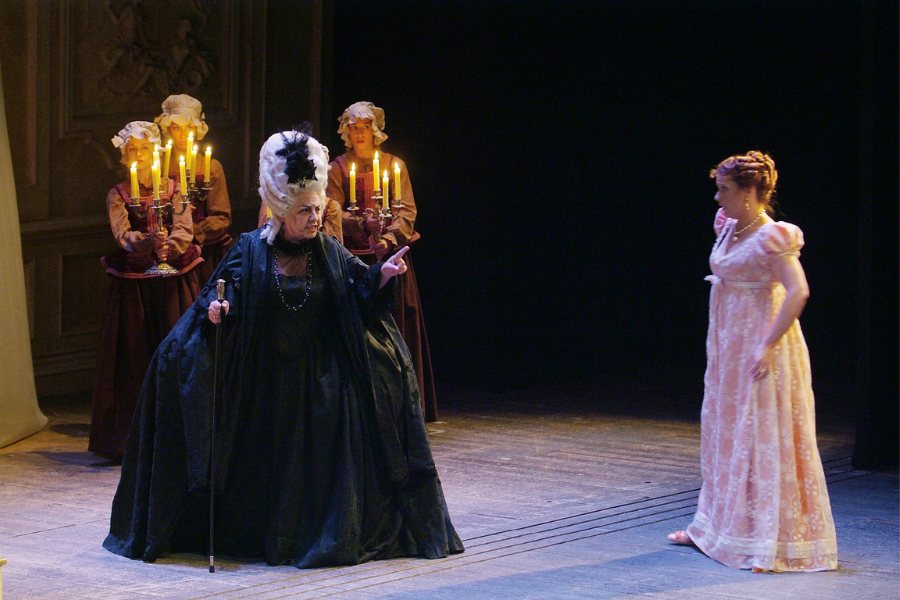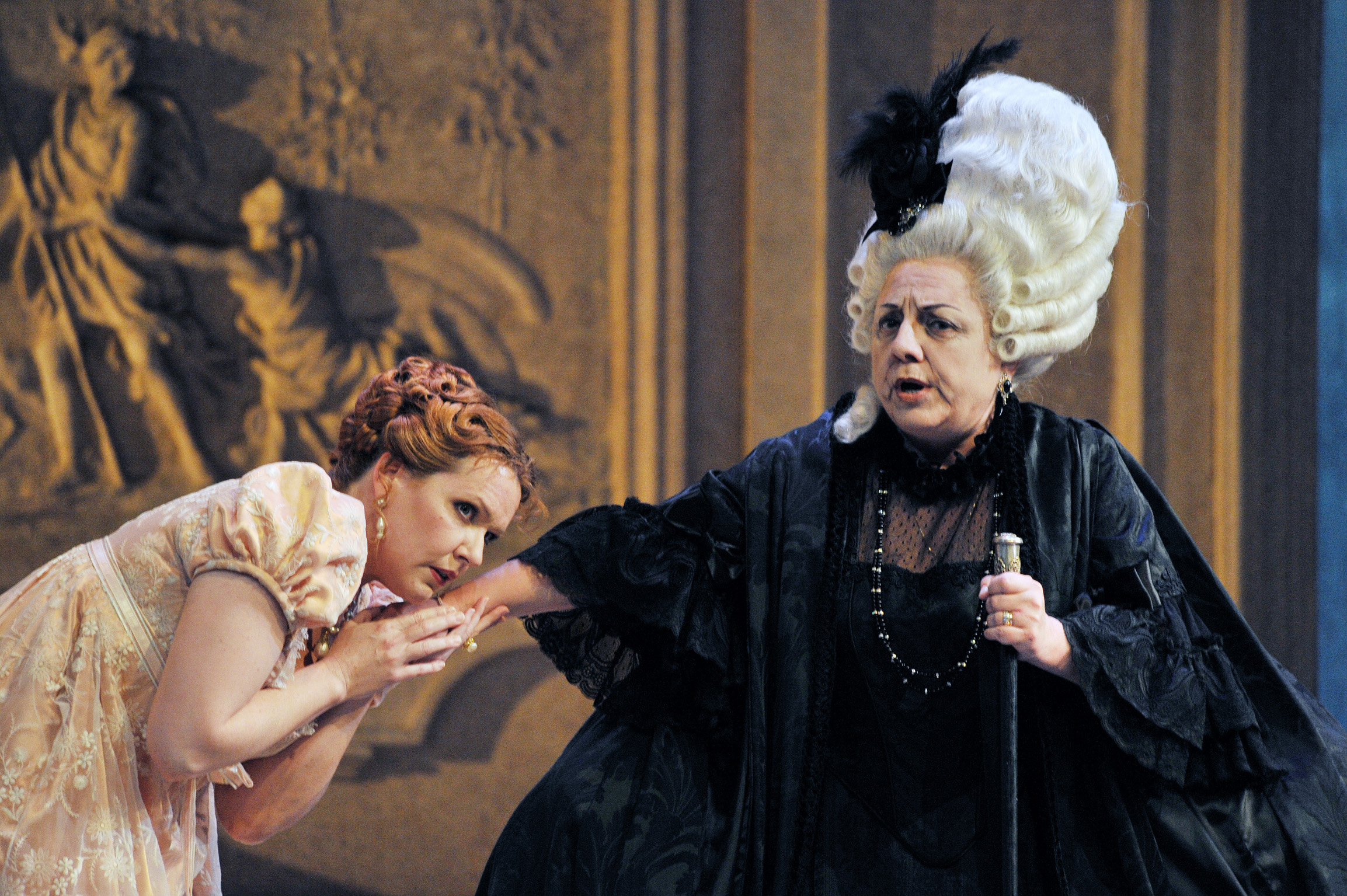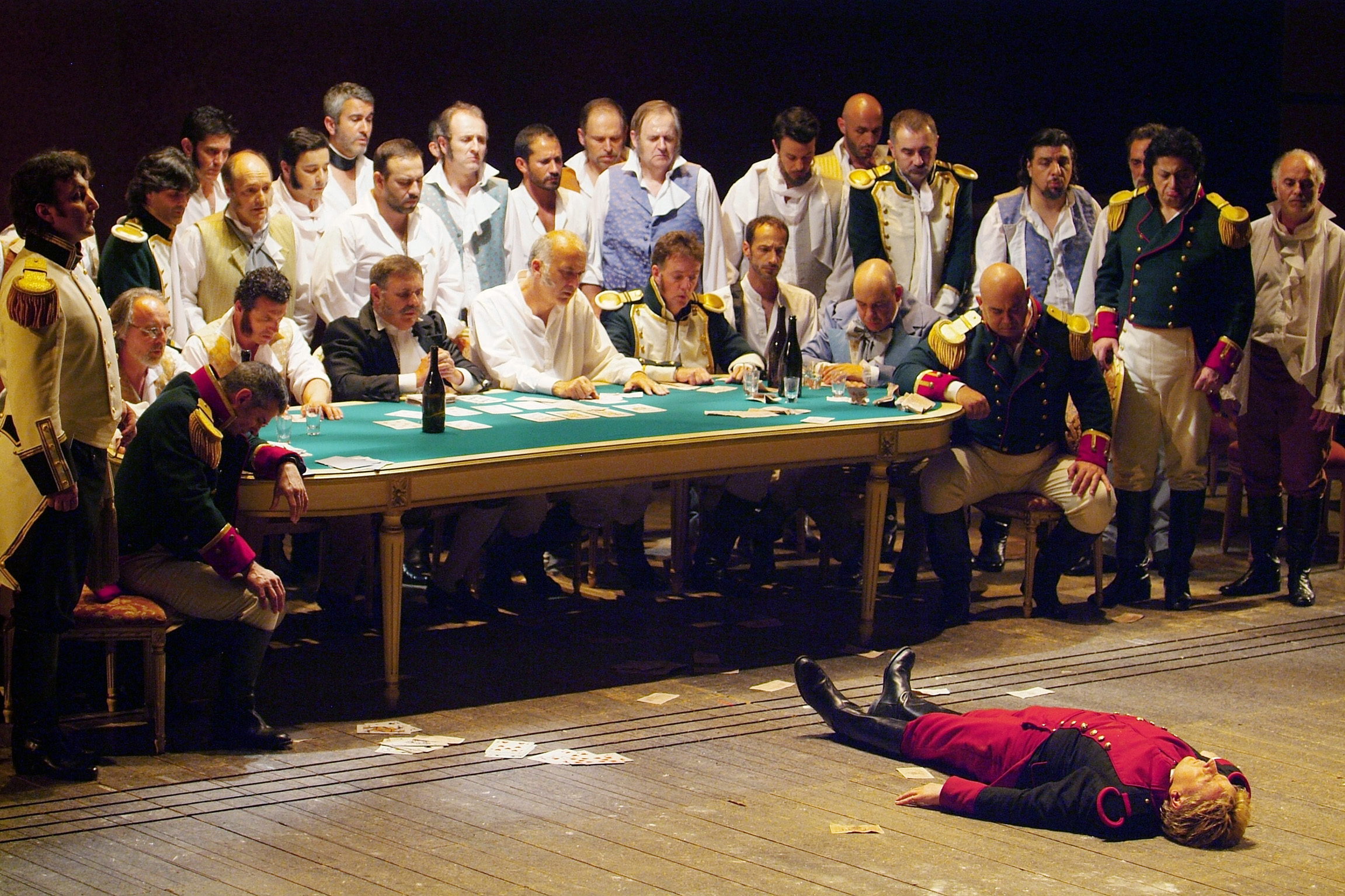Vuelve al Liceu la ópera “La dama de picas” de Tchaikovsky con la clásica y exuberante producción de Gilbert Deflo

El teatro barcelonés recupera la aclamada producción de Gilbert Deflo, con una escenografía clásica y de decorados suntuosos que también presta atención a la psicología de los personajes. La batuta de Dmitri Jurowski será la encargada de dirigir la Orquesta Sinfónica y Coro del Gran Teatre del Liceu, así como el Coro infantil VEUS – Amics de la Unió de Granollers, en un despliegue de talento y fuerza que cuenta con un reparto de lujo: el personaje de la condesa estará encarnado por Elena Zaremba y Larissa Diadkova, y el príncipe Ieletski lo defenderán Rodion Pogossov y Andrey Zhilikhovsky.
Uno de los títulos de ópera por excelencia de Piotr Ilich Tchaikovsky, La dama de picas, vuelve al Gran Teatre del Liceu del 26 de enero al 11 de febrero con 10 funciones de la aclamada producción firmada por el director de escena belga Gilbert Deflo.
Tras el éxito de Eugene Onegin, Tchaikovsky volvió a adaptar una obra de Pushkin en la que sería su penúltima ópera, un encargo del Mariinsky Theatre que aceptó desarrollar cuando se entusiasmó con el libreto que había empezado a proyectar su hermano Modest.
El estreno tuvo lugar el 1890, en un contexto de apoteosis postwagneriana y de triunfo de la ópera realista, y Tchaikovsky aún seguía componiendo a partir de un lenguaje más propio de mediados de siglo, buscando el bel canto, la melodía firme y la conexión con el pasado —como deja claro la ópera pastoril que se representa dentro de la misma ópera en el segundo acto, que es un homenaje a Mozart—, pero a la vez introduce una serie de elementos modernos en forma de tortura psicológica y mirada al abismo del horror que pertenecen, en realidad, a la siguiente gran revolución operística, la del simbolismo y el expresionismo. Una peculiar modernidad que hay que encontrar, no tanto en la forma, sino en el fondo de La dama de picas, una reflexión sobre los peligros que comporta dejar que el alma se envenene con obsesiones fútiles.
La batuta de Dmitri Jurowski será la encargada de dirigir la Orquesta Sinfónica y Coro del Gran Teatre del Liceu, así como el Cor infantil VEUS – Amics de la Unió de Granollers, en un despliegue de talento y fuerza que cuenta con un reparto de lujo. El personaje principal de La dama de picas, Hermann, debe cantar en los tres actos —y en las siete escenas— en los que se divide la ópera, y eso significa que está sobre las tablas durante casi tres horas. Hermann implica un riesgo para cualquier tenor spinto, pues no solo exige un alto nivel de interpretación actoral, sino sortear con técnica y poderío todos los retos a los que le expone una partitura repleta de agudos que exigen brillo, entradas abruptas, fraseos largos y diálogos intensos con el resto de los personajes, sobre todo Lisa, otra figura que requiere de una soprano dramática con experiencia. En ese aspecto, el elenco de estas representaciones está sobradamente cubierto con dos Hermann de alta categoría —el azerí Yusif Eyvazov y el georgiano George Oniani y dos Lisas insuperables en manos de la consagrada Sondra Radvanovsky, que está firmando en Barcelona algunas de las mejores temporadas de su carrera, y la cada vez más pujante soprano armenia Lianna Haroutounian. En la función del 27 de enero, el papel de Lisa recaerá en la soprano rusa Irina Churilova.

La soprano estadounidense Emily Magee y la contralto polaca Ewa Podles en la producción de Gilbert Deflo para «La dama de picas», temporada 2009/2010. Foto: Antoni Bofill.
Acompañando a los dos protagonistas, hay también dos personajes con momentos destacados y decisivos: la condesa, un papel que se alternarán Elena Zaremba y Larissa Diadkova, y el príncipe Ieletski, que requiere de un barítono con fraseo dulce y capacidad para escalar hacia algunos agudos imponentes, y que defenderán Rodion Pogossov y Andrey Zhilikhovsky. La dama de picas requiere también de numerosos papeles secundarios, un coro e incluso un conjunto de ballet clásico, que actúa en el segundo acto representando una coreografía de Nedejda L. Loujine, inspirada en el ballet de corte del siglo xviii, a partir de la propuesta original que diseñó Marius Petipa en el estreno de la ópera en 1890. Un enorme despliegue de talento y fuerza que garantizará un desempeño perfecto de una obra altamente exigente, comandada por la batuta del perfeccionista Dmitri Jurowski.
Uno de los grandes momentos musicales de la obra es Ya vas lyublyu, en el segundo acto. Lisa acude con su prometido, el príncipe Ieletski, a un baile de máscaras al que está invitada toda la nobleza de San Petersburgo. Ella entra con un claro gesto de perturbación: el día antes se encontró con Hermann en el parque y empieza a sentir una pulsión amorosa de la que el príncipe parece darse cuenta. En ese momento, el barítono debe defender un aria de un lirismo delicado que es, por su forma clásica —una especie de versión rusa tardía de la tradición belcantista italiana—, uno de los momentos individuales más queridos de la ópera y una de las grandes aportaciones de Tchaikovsky al arte del aria de factura perfecta.
En el tercer acto tiene lugar la aria Akh! Istomilas ya goryem interpretada por Lisa, todo un tour de force para cualquier soprano. Lisa espera a Hermann a medianoche, junto al canal. Es una noche fría y perturbadora, otra metáfora del estado de ánimo de la joven, que sospecha que Hermann ya no la ama, y que su acercamiento inicial estaba motivado por descubrir el secreto de las cartas de la condesa. Mientras aguarda, se lamenta por su mala suerte en un aria breve, esforzada y cargada de dolor
Argumento
Al principio de la ópera conocemos a Hermann, que está enamorado de una joven noble, Lisa, lejos de su esfera social. La abuela de Lisa es una vieja condesa de la que se murmura que conoce un truco mágico para ganar a las cartas; cuando Hermann se entera, Lisa ya solo le interesa como vía de acceso a la condesa, a la que termina asaltando en su habitación en el segundo acto para que le revele el secreto; accidentalmente le causa la muerte de un susto.
En ese momento, la historia se convierte en pesadilla: Hermann no ha descubierto el secreto, pero el fantasma de la condesa se le aparece y se lo revela. Él ha enloquecido, y Lisa, que ha caído perdidamente enamorada al final del primer acto, comprende ahora que ya no podrá recuperar a Hermann y se suicida arrojándose al río; él intentará usar el truco en una partida de cartas, pero perderá y se suicida; es la venganza póstuma del fantasma de la condesa y un escarmiento contra el pensamiento irracional.
Sobre la producción
Algunos de los adjetivos más utilizados para describir la producción de La dama de picas que diseñó el director de escena belga Gilbert Deflo a principios de este siglo —y que se pudo ver en el Liceu por última vez al final de la temporada 2009/2010— son exuberante, lujosa y opulenta: nada más alzarse el telón, en el primer cuadro de la ópera se muestra el parque en el que Hermann sabrá por primera vez el secreto para ganar en los juegos de cartas, y allí observamos una producción a la antigua usanza, con decorados pintados que representan un atardecer rosado que terminará derivando en tormenta furiosa y enormes grupos de figurantes vestidos a la moda de la Rusia de los zares: uniformes militares generosos en detalles, vestidos de dama de la alta sociedad que parecen de seda, árboles y falsas barandas de mármol.
La acción de La dama de picas se sitúa a finales del xviii, en San Petersburgo, bajo el reinado de la zarina Catalina la Grande. El tiempo de la acción no es importante, realmente, y la misma historia —que trata sobre la caída grotesca de un militar cegado por los juegos de azar, y que en su obsesión renuncia al amor de su vida y a su propia salud mental— podría ser llevada a otros lugares, otros tiempos, incluso podría adaptarse con un lenguaje simbolista, surrealista o posmoderno. Pero el libreto es a la vez preciso en detalles y momentos —al final del tercer cuadro la misma Catalina entra en escena, se representa un ballet con claras reminiscencias de los tiempos de Mozart, etcétera—, y cualquier decisión que no se corresponda con la fidelidad a la letra puede quedar muy comprometida si no se toman las decisiones con valentía. La dama de picas pertenece a un tiempo de la ópera europea —la de Puccini, Giordano, etcétera— en la que el afán de precisión era alto, y eso sigue condicionando todavía, en gran medida, las producciones actuales. Son anclas que mantienen viva la tradición.
Esta producción, pues, es fiel al texto y al espíritu clásico. Es, por tanto, lujosa, opulenta, exuberante a medida que van pasando los actos y los cuadros: en el primero estamos en el parque, y en el segundo en las habitaciones de Lisa, con grandes plafones de madera, cortinas suntuosas y una cama noble. En el tercer cuadro se nos presenta el interior de un palacio, y en el cuarto los aposentos de la anciana condesa, y en ese momento es cuando la producción empieza a girar hacia la oscuridad y toma elementos más propios de una pesadilla gótica. La cámara de la condesa se muestra tupida, polvorienta y oscura, como si fuera el refugio de una bruja. Hermann, que en su popular escena de la tormenta ha empezado a obsesionarse con el secreto de la anciana —esas tres cartas que desbloquean el secreto para ganar en el juego—, arrastra ahora consigo el mal fario, a su alrededor todo es negritud e inquietud. En el tercer acto, la producción recuerda a las viejas películas de terror y a los grabados de los libros clásicos de literatura fantástica: el amor ha sido vencido por la irracionalidad, la luz ha sido arrinconada por la oscuridad que nubla la mente de Hermann.
Uno de los puntos claves de la propuesta escénica es la atención a la psicología de los personajes: bajo la riqueza del vestuario y el atrezo late una pasión turbulenta que alimenta la locura colectiva.






